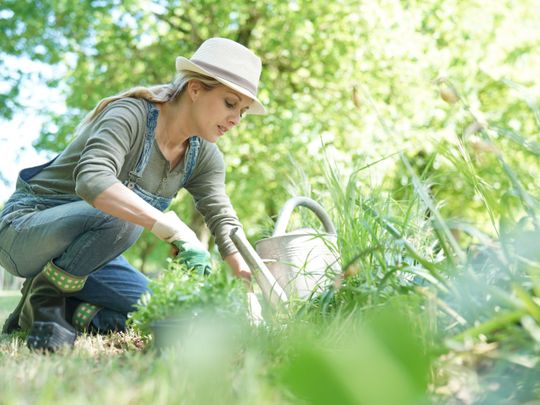
I spent many winter mornings this year staring at my big, empty yard from my kitchen window, fantasising about the summer that’s now almost here and wondering what I could do with all that space. Build a giant slip and slide? Raise a small family of goats? I settled on what I thought was something modest: planting a legit garden despite having absolutely no gardening know-how or experience.
This is the year I decided to put down literal roots in Lincoln. I grew up in Hialeah, in Greater Miami, and most of the yard there was paved in concrete and converted to driveway and additional parking spots. In Nebraska, I already had plenty of both, so why not do something outrageous, like put plants in the dirt?
I begged a friend who tends a thriving garden of her own in an even more wretched climate (Minnesota) to come visit me and help me come up with a plan. She explained how zones work — that the country is divided into chunks based on temperature, meaning zones are extremely depressing reminders of how palm trees will not survive in my yard. I never encountered the zone concept growing up in South Florida because (a) anything you plant will grow and eventually take over your yard, and (b) I never had a yard of my own when I lived there as an adult, although I did lovingly tend to a few strips of concrete by sweeping them regularly.
My friend introduced me to the phrase “winter interest” — another concept that doesn’t really exist in Florida. I’ve decided it means that come winter, a plant’s sticks (branches?) will have a cool shape and possibly a cool colour while looking otherwise totally dead.
The people at the plant nursery that I’ve decided is my second home know I’m a transplant from Florida, and they have repeatedly apologised to me for the winter we just had, as if it were directly their fault. As we wander around the nursery, they’re careful to explain that even though the plants will die in the winter, they will come back next spring. Still, I hold out every plant I lug onto the flatbed cart one last time to the person helping me and confirm: So will this one come back? They try to reassure me, but I am still sceptical. I guess we’ll see who’s right in a year.
So far, I find gardening terrifying. Things can die. I keep making mistakes. I keep putting plants in spots and deciding three days later that they aren’t happy there, then moving them again, then again, proving the plant to be a metaphor for my academic career. I look for the receipt to see if I can return it.
For inspiration, I’ve been ingesting a steady diet of Monty Don’s Big Dreams, Small Spaces, an aptly named British gardening show (on it, people have — you guessed it — big dreams and small spaces). Monty Don tells his viewers to be confident, to let their personalities and strengths come through in their garden’s design, that a garden is a space for them, and so in a way there’s no truly wrong way to go about it. he says to the camera in one episode,. I know my garden is teaching me this, and that I need to learn it, but still, I want it done and perfect. That will never happen, which I guess is exactly why I started one in the first place.
My most recent struggle happened in the kitchen garden area, where I was thinning out the lettuces, which I grew from seed. When the first leaves sprouted, I felt like a god. And so later, it seemed wasteful and even kind of sad to pull many of them up. Thinning them became a big deal that proved how much my garden was really a reflection of a whole host of other anxieties in my life. Each sprout I needed to pull up became a metaphor for something — a path I wouldn’t pursue, a boundary I needed to maintain, a memory I needed to confront. I wanted to keep them all somehow, even though I knew logically that doing so would guarantee that none of the lettuce would flourish as it should. I didn’t want to make a mistake and have it all fail.
I texted my Minnesota gardener friend a picture of the too-stuffed lettuce bed and said “AFRAID TO DO THIS” and she replied, “Don’t be. Everyone needs room to grow. It’ll be fine.”
I had to take breaks as I pinched the leaves where they met the soil and pulled up. The instructions on the seed package say to thin them so the plants are 6 inches apart; I’ve got at most 2 inches between them now. It’s the best I could do at that moment. It might not be enough. I will try again tomorrow.
— Jennine Capo Crucet is a Cuban-American novelist, and short story writer




_resources1_16a31069e4e_small.jpg)






